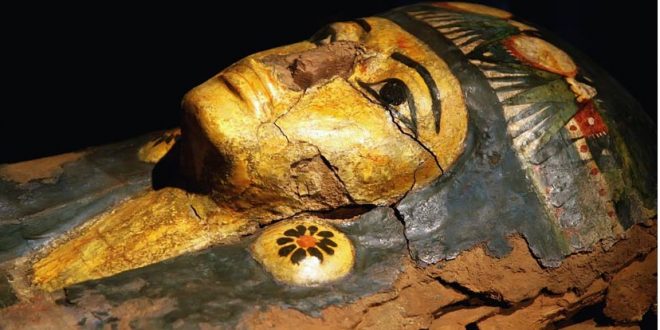The hieroglyphics that adorn the walls of ancient Egyptian tombs are pure propaganda, designed to present the pharaoh or noble person in the best light possible. But scraps of papyrus paper used with plaster to create the decorated boxes that were used for placing mummies tell a different story. From shopping lists to tax returns, letters, and legal documents, the papers reveal the everyday life of a coffin’s occupant. And now, thanks to new scanning technology, it will be possible to read some of the secret texts contained in the mummy boxes.
The BBC reports that researchers in London have developed new scanning technology which enables them to bring out writing that has been obscured over the millennia by the thick glue and plaster that were used on top of sheets of papyri to create mummy cases and masks. Until now, the only way to read some of these ancient texts was to completely destroy the mummy case.
Mummy Masks and Cases Destroyed to Extract Text
Sometimes, up to 150 papyri fragments were used in the creation of a single mask. The controversial practice of extracting papyri involves soaking the mask in soapy water until the papyri fragments separate, a technique that destroys the mask but preserves the ink on the papyri. The practice had become increasingly popular in recent years, as researchers discovered that some of the texts used to make masks included funerary texts, letters in Coptic and in Greek, Coptic Gospel texts, and fragments of classical writings by Greek authors.
New Tech Preserves Mummy Boxes
Now, thanks to the new scanning tech developed in London, it will be possible to reveal the hidden papyrus texts without destroying the mummy masks and cases.
“I’m really horrified when we see these precious objects being destroyed to get to the text. It’s a crime,” said Dr Kathryn Piquette, of University College London. “They are finite resources and we now have a technology to both preserve those beautiful objects and also look inside them to understand the way Egyptians lived through their documentary evidence – and the things they wrote down and the things that were important to them.”
The new procedure involves scanning mummy cases with different kinds of light which makes the inks glow.
“Because the waste papyrus was used to make prestige objects, they have been preserved for 2,000 years,” Prof Adam Gibson of University College London, who led the project, told BBC. “And so these masks constitute one of the best libraries we have of waste papyrus that would otherwise have been thrown away so it includes information about these individual people about their everyday lives”
Egyptologists are excited about the new technology, which will offer new insight into everyday life in ancient Egypt.
Ancient Origins
 Lebanese Ministry of Information
Lebanese Ministry of Information



